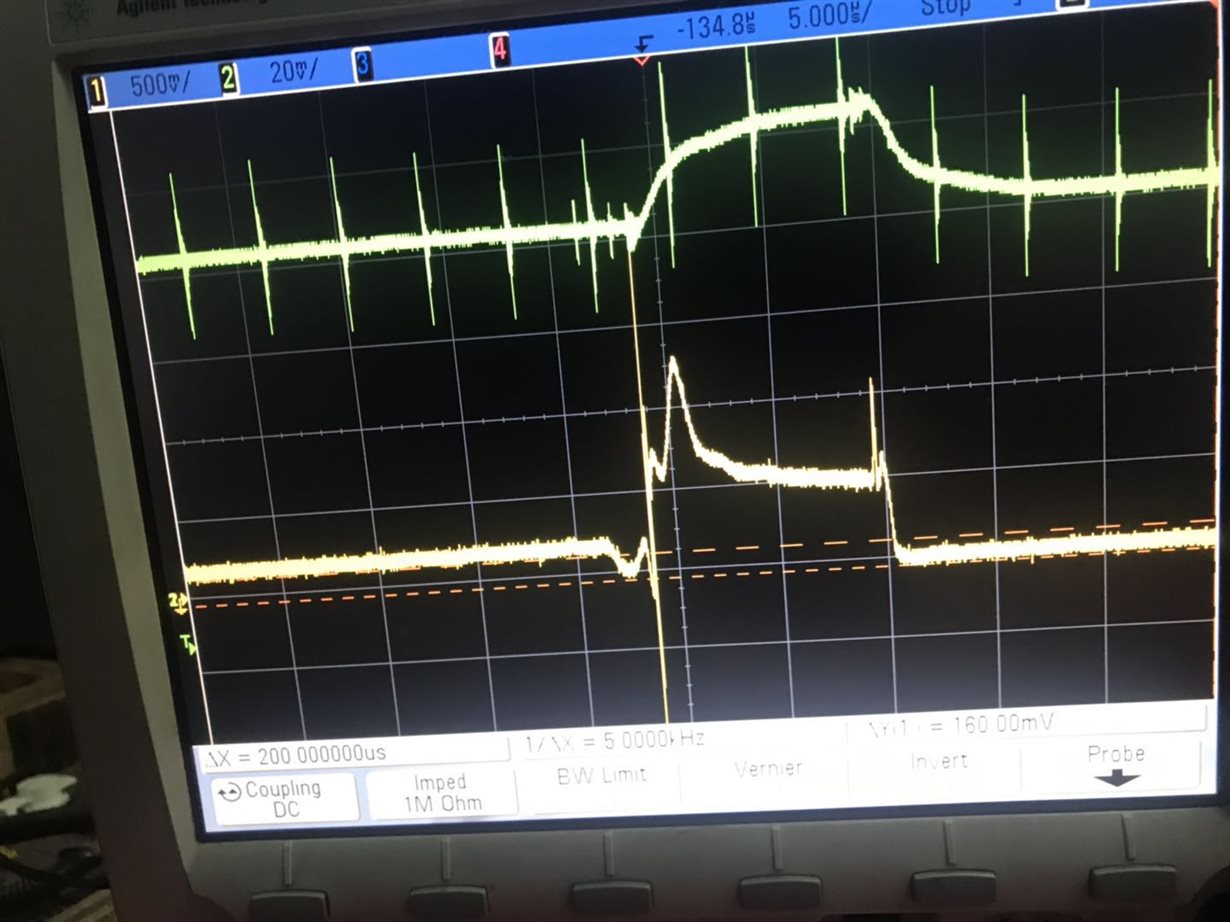Hi team,
Customer is using INA240A2 for low side current measurement. The current to be measured has a frequency of 15kHz, which is the current of the lower bridge arm of a half-bridge DC motor driver circuit, and may be up to 300A peak. The shunt resistor is 16mOhm.
The measured waveform as below:
Red is the differential input of the shunt resistor.
Yellow is the output voltage of INA240.
We can see a spike in the output right before the dropping edge. I'm wondering what may cause this spike?
Thanks!
George




